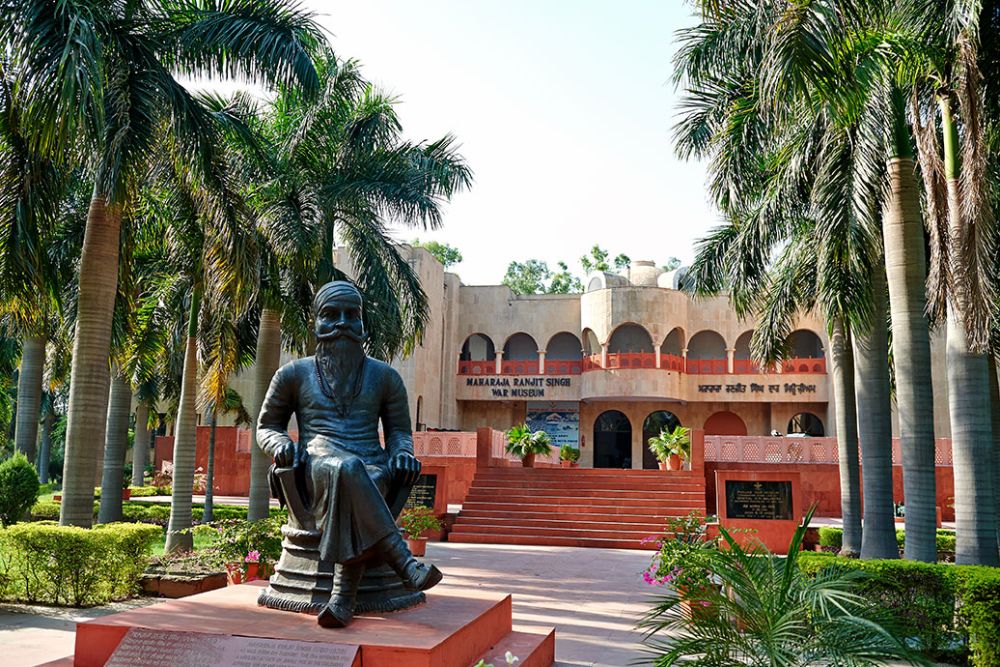

The history of tourism for the Maharaja Ranjit Singh War Museum in Ludhiana, Punjab, is relatively recent in comparison to the ancient and medieval attractions India is known for. The museum was established in 1999 and is dedicated to preserving the memory of the martial spirit and valor of Punjab.
The museum is named after Maharaja Ranjit Singh, the legendary warrior-king who founded the Sikh Empire in the early 19th century. Although the museum itself does not date back to that era, it plays a crucial role in showcasing the rich military history of the region, including the significant battles and heroes from Ranjit Singh's time up to the present day.
Visitors to the Maharaja Ranjit Singh War Museum can explore a variety of galleries, each dedicated to different eras of Punjab's martial history. The museum features an array of military artifacts, including old weaponry, a replica of the Maharaja's throne, armored vehicles, fighter planes, and a poignant display on the Kargil War.
In recent years, the museum has seen an emerging trend in educational tourism, with students and history enthusiasts visiting to learn more about Punjab's illustrious martial past. The museum has also become a stop for international tourists seeking a comprehensive view of India's military history.
The museum is open to the public six days a week, closed on Mondays, and is often included in city tours of Ludhiana. Its location on the GT Road makes it easily accessible for tourists.
On important dates related to regional and national military history, the Maharaja Ranjit Singh War Museum hosts special events and commemorations, inviting veterans, scholars, and public dignitaries to engage with the community and enliven the stories of past heroes.
The future of tourism at the Maharaja Ranjit Singh War Museum promises to enrich visitor experiences through the incorporation of technology, such as virtual reality setups that reimagine historical battles and improved interactive exhibits. As the museum grows in popularity, it continues to enhance educational programs and cultural understanding among tourists from across the globe.